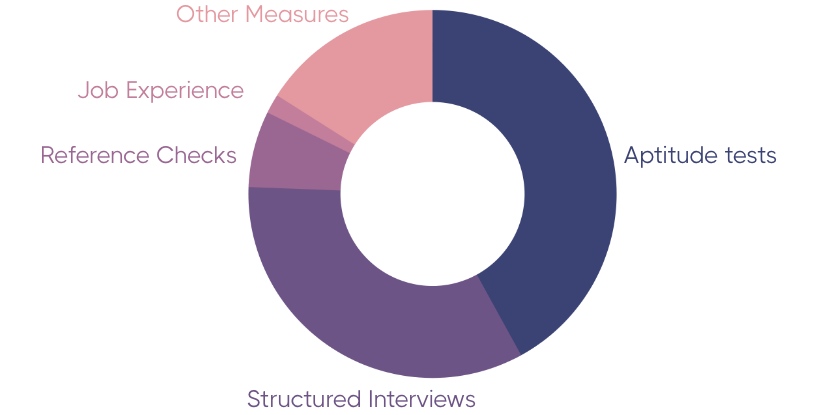As we start to return to the office and begin to feel a sense of normality in our working days, it’s worth pausing and reflecting on the past nine months and what’s changed.
It has felt like a whirlwind. Many businesses have had to pause larger projects and high-level strategic activities in favour of just getting through the next week or month to keep up to changes in market and customer demands.
What we know is that employees are still feeling uncertain and we’re concerned about how to retain them. If your business has managed to grow during the pandemic, you’re also probably thinking about attracting and hiring staff.
Working with both hiring managers and those seeking work, we’ve been able to see both sides of the coin and have summarised five lessons for business owners to reflect on over the seasonal break and into the new year to take advantage of what has been the year 2020.

1. Honesty is the best policy
What happens when you feel uncertain about something? Does your mind automatically go to the worst-case scenario?
This is your brain trying to keep you safe, but it often doesn’t help in the moment and can lead to making poor or irrational decisions.
It’s the same with employees. They’ve endured this huge period of uncertainty and are still feeling the negative effects of not knowing what was going to happen to them or their job. One way to minimise this feeling for them is to be upfront about how the business is performing (as much as is appropriate) and where you see their role in the months to come. Most likely, the reality is not going to be as bad as what is currently running through their minds.
Task: Schedule a meeting with your team members in early December to discuss the business’ journey through COVID and where to from here. Whether it’s virtual or you’re able to meet face to face, people like it when there is certainty and this allows you to tie up 2020, without anybody spending their festive break wondering what’s going to happen in 2021.
2. Flexibility isn’t always the answer
As we’ve mentioned, most employees don’t thrive on instability and the unknown. Many businesses have used this time to ensure their employees have flexible working hours, assuming this is what they desire in a workplace.
“Work whenever you like, just get the results.”
Whilst this can work for some roles and individuals, it’s not the case for the majority. Whilst there is a level of flexibility that is appreciated, what employees really crave is a sense of autonomy.
Instead of telling them to work whenever they like, and then getting frustrated that they aren’t returning your calls at 12pm because they’re out for lunch, picking the kids up or getting some household chores completed, ask what hours suit their needs and let them know what you were thinking as well.
This way, you’re on the same page and the employees feel as though they’ve had input into their working week, without feeling like they have to be constantly online. Putting these times in shared calendars can also help.
3. Avoid the need to be on video, 24/7
Whilst it can be easy to feel the need to replicate the office environment by scheduling all meetings virtually face to face, a study from the National Geographic found that ‘virtual interactions can be extremely hard on the brain’ due to the continuous partial attention of having to focus on many people at once, with limited body language and verbal cues to read.
The term ‘self-correcting’ has also been used in relation to ‘Zoom fatigue’ because, in the physical face to face meetings, we’re not looking into a mirror and distracted by our own faces. This can cause employees to disengage and feel exhausted from a meeting, and end up contributing less, affecting good performance.
Task: Before scheduling another virtual meeting, ask yourself if it could be sorted with a phone call instead. This way, both managers and employees only have to focus on voice, and can use the time to get up and step away from the desk too.

4. Routine and structure aren’t tedious, they’re energising
What normally happens when you go on holiday? Routine and structure fly out the window, right? It’s nice to not know where you’ll be going for dinner tonight, whether to hike that mountain or sleep in or what book to read on the plane (or car, COVID safe).
For a time.
All of this is also in a positive context, and knowing your job will be waiting for you when you get home.
What also usually happens when you get home from holidays is you’re relieved to get back to the familiar comforts and routine of life. This is because a large chunk of your brain has returned to autopilot and you’re able to use that energy again more efficiently.
Put this in the context of COVID. Having to shift your workspace into your home space virtually overnight, plus the uncertainty of not knowing if your job will stay the same or you’ll lose it… some certainty and routine is starting to look pretty good right?
Helping your employees to be aware of this, and how they’re feeling, will help you both feel more positive about implementing a new routine or habits to allow everyone to be more productive and feel more positive about this unfamiliar situation.
Task: Schedule time in you and your team’s calendar for weekly meetings on operational matters to keep everyone informed of what’s going on. Then, scheduling monthly 1 on 1s with your employees will allow you to have more in-depth conversations and could potentially help them feel a little more at ease too.
5. Celebrate the wins
As the one in charge of business growth, it’s hard not to focus on the next challenge, the next mountain to climb or the next new customer. When setting goals and key milestones, it’s worth putting aside some time to reflect and celebrate how far you’ve come.
This year, positivity and good feelings have been hard to come by both at work and at home. Without delving too deep into the performance indicators, give your team a boost by recognising some of the small stuff and you’ll likely see the benefits play out afterwards.
Research from Berkley suggests that when workplaces practice gratitude, it helps to create an environment where employees feel appreciated and not just a cog in a machine. In a study by Gallup, engagement rates for employees whose managers focus on their strengths are more than double that of employees whose managers focus on their weaknesses.
This can’t be a one-off though. Like in the previous lesson, practice consistency over intensity. Something we’ve been doing as a team is taking time in our Friday afternoon catch ups to share one Win, a Learning and one thing we’re grateful for from the week. It doesn’t have to be work-related, and it’s a nice way to recognise your team for the effort and work they’ve put in.
Did you enjoy this blog?
If you are a small business transitioning from WFH to on-site, it’s worth slowing down and considering the emotional and physical health of your employees, and how that may affect your business. At Inject, we understand how a work dynamic can drastically change, and consequently affect the performance of the business, and the health of managers and employees.
If you’re interested to learn more about Inject’s approach and management, or how we can help your business, feel free to connect with me on LinkedIn, or contact us here.











